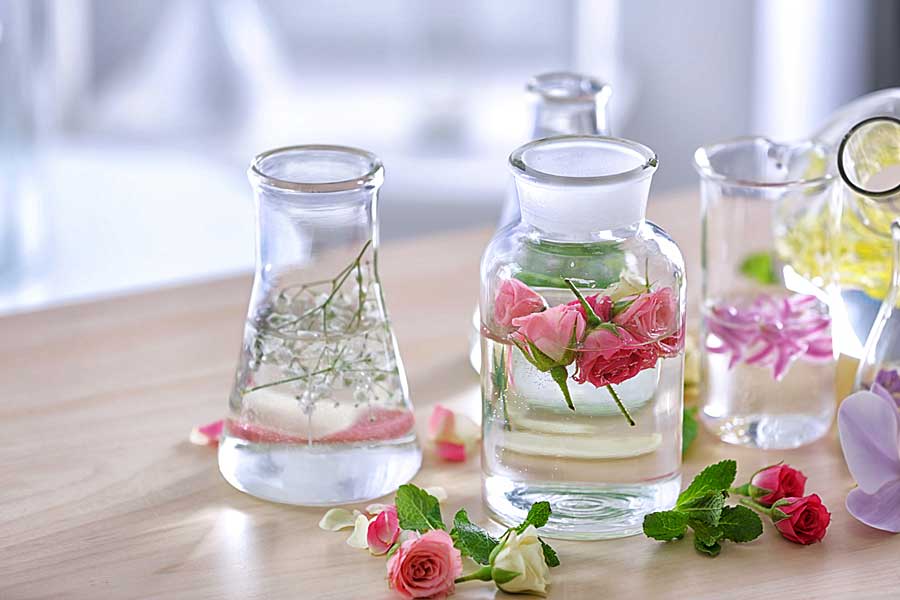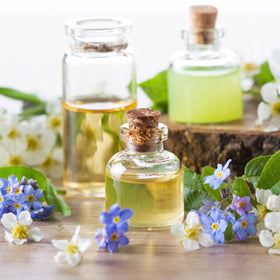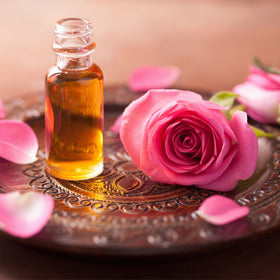Trusted for 25+ Years
Flower Essences & Sex

Dr. Lisa Lawless, CEO of Holistic Wisdom
Clinical Psychotherapist: Relationship & Sexual Health Expert

How Effective Are Flower Essences?
Holistic health should not be about believing in anything that is alternative to western medicine; rather, it should be about using critical thinking and accessing reputable science-based research to determine what alternative treatments may be effective. Because we value science and integrity, we will be honest with you about alternative treatments. For more, see our Fear-based Sex Toy Marketing Hype guide for more about our holistic principles.
There is a lot of deserved cynicism regarding flower essences due to a lack of quality research and studies. Study after study has shown that flower remedies are only as effective as placebos but are typically considered safe. Placebos can be highly effective and work in at least a third of patients. One of the reasons for this is positive thinking and taking the time to do something that nurtures oneself. Thus, it may be beneficial to simply use flower essences as a way to hold the intention to do something good for yourself with specific goals in mind, thus improving one's psychological outlook.
What Are Flower Essences?
Flower essences are dilute extracts of various types of flowers and plants used to treat animals and people. They are similar to homeopathic remedies in that they are diluted to make them more effective than just using the original flower as a herbal extract.
The person who first developed the original flower remedies was Dr. Edward Bach, a famous English physician. He created the Bach Flower Remedies when he was working as a homeopathic practitioner and devoted the last years of his life to researching and developing his remedies. He wanted to find a more straightforward form of treatment that would not require anything to be destroyed or altered.
Dr. Bach believed that diseases of the body come about as a result of imbalances or negativity at the level of the soul, and correcting the problem at the root would allow for healing on all levels. The flower remedies balance dysfunction in the emotional and spiritual body and bring gentle healing by bringing the body back in balance. Dr. Bach felt that the flower essences act as catalysts to create healing. There were initially thirty-eight Bach Flower Remedies that Dr. Bach felt would correct all possible imbalances. The flowers are gathered from nature when they are just at the height of bloom.
The flowers are considered by today's standards as organic, with no pesticides or foreign toxins. The remedies are made by leaving the flower out in the sun, and the extracted essence is then diluted in water and preserved with alcohol to make a mother tincture. The resulting remedy is then diluted in spring water to make a solution.
Essential Oil Vs. Flower Essences
Essential oils are oils from different plants and flowers. They have distinct scents and can have strong effects both positively and negatively depending on how they are taken. For example, chamomile oil is beneficial in sleeping and can be used in a bath, whereas cinnamon oil will irritate the skin, even burning it if not prepared properly.
Flower Essences do not have a scent; they are made by infusion of wild plants & flowers and are considered homeopathic. Here is a list of the 38 original flower essences that Dr. Bach created and what they are intended to do:
- Agrimony: mental torture behind a cheerful face
- Aspen: fear of unknown things
- Beech: intolerance
- Centaury: the inability to say no.
- Cerato: lack of trust in one's own decisions
- Cherry Plum: fear of the mind giving way
- Chestnut Bud: failure to learn from mistakes
- Chicory: selfish, possessive love
- Clematis: dreaming of the future without working in the present
- Crab Apple: the cleansing remedy, also for self-hatred
- Elm: overwhelmed by responsibility
- Gentian: discouragement after a setback
- Gorse: hopelessness, and despair
- Heather: egocentric and self-concern
- Holly: hatred, envy, and jealousy
- Honeysuckle: living in the past
- Hornbeam: procrastination, fatigue doing things
- Impatiens: impatience
- Larch: lack of confidence
- Mimulus: fear of known things
- Mustard: deep depression for no known reason
- Oak: the plodder who keeps going past the point of exhaustion
- Olive: exhaustion following mental or physical effort
- Pine: guilt
- Red Chestnut: over-concern for the welfare of loved ones
- Rock Rose: terror and fright
- Rock Water: self-denial, rigidity, and self-repression
- Scleranthus: inability to choose between alternatives
- Star of Bethlehem: shock
- Sweet Chestnut: Extreme mental anguish
- Vervain: over-enthusiasm, mania
- Vine: dominance, and inflexibility
- Walnut: protection from change and unwanted influences
- Water Violet: pride and aloofness
- White Chestnut: unwanted thoughts and mental arguments
- Wild Oat: uncertainty over one's direction in life
- Wild Rose: drifting, resignation, apathy
- Willow: self-pity, and resentment
Most popular blend on the market:
- Rescue Remedy: combination blend for anxiety and stress
Sexuality & Flower Essences
The original 38 Bach remedies don't address sexual issues, most likely because they were developed during the 1930s when sexuality was not discussed as openly. Below are how some people use flower essences for addressing sexual issues.
-
Wisteria is used to clear sexual inhibitions.
-
Easter lily and basil are used to remedy feelings of shame or guilt regarding sexuality.
-
Sticky monkeyflower, hibiscus, and wisteria are used to embrace one's sexual feminine side, sexual warmth, and intimacy.
-
Flannel flower is often used for those uncomfortable with physical and emotional intimacy.
-
Crab apple and billy goat plum address sexual shame and guilt.
-
Calla lily is used for those who struggle with sexual identity.
-
Black cohosh is often used by those who struggle in toxic relationships.
-
Bush gardenia is for increasing sexual desire and libido.
-
Wedding bush is used for those who avoid making commitments in relationships.
-
Fairy lantern is used for those that need to work on developing emotional maturity.
- Holly is for feelings of insecurity and jealousy.
In Closing
Flower essences can be helpful if you believe they will be much like a placebo and may be beneficial in using them simply to take the time to nurture yourself through mental reassurances. Explore our related education on Sex & Aromatherapy and Color Therapy & Sex.


